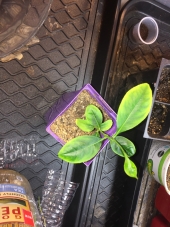posted 3 years ago
I have successfully transplanted many paw paw trees. I agree with the other posters here. Only try to transfer them when young.
Another important tip I read is that they should only be transplanted when actively growing. When dormant, (leaves have fallen off), they don't adjust well. So, early in the spring after the leaves have grown out or late when it's cool and the leaves are still on. I usually have the hole dug before I transfer them, and try to transfer the whole tap root intact with the soil, so it just fits right into the next spot. Takes a bit of planning, but it's worth it.
I plant seeds, then transplant the tiny trees. Yes, some shade is required for the really young ones to make it.
John S
PDX OR










